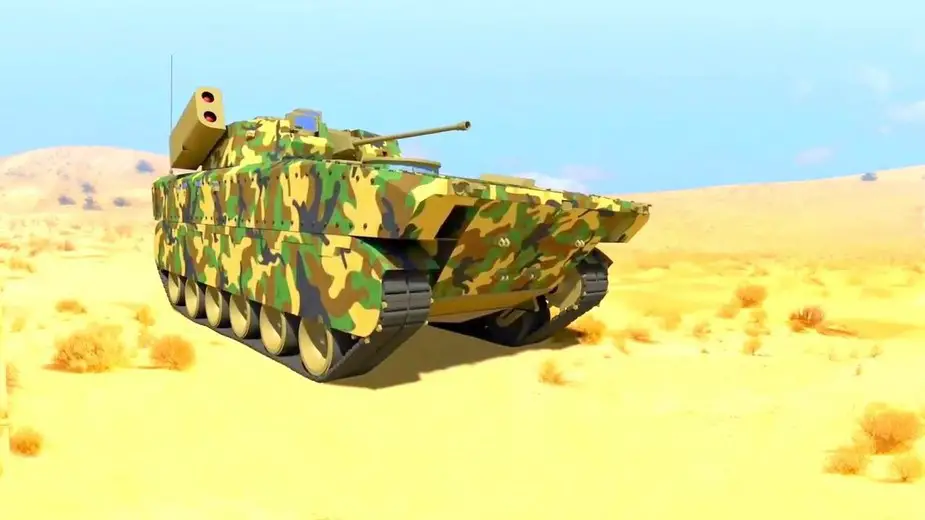A 10-year-old plan to acquire 2,600 future infantry combat vehicles for the Indian Army is staring at an uncertain future as it is stuck due "divergent views" among the stakeholders on its implementation, official sources reported to The Economic Times of India. They said another ambitious programme to indigenously manufacture a fleet of modern battle tanks, christened as future ready combat vehicle, is also not moving forward due to procedural delays.

Tata's project for the Indian FICV (Future Infantry Combat Vehicle) project (Illustration source: Tata Power SED)
The sources said a scheduled meeting among top brass of the defence ministry and the Army to discuss ways to take forward the future infantry combat vehicles (FICV) project last month was postponed due to certain differences over the programme. The FICV was first envisaged in October 2009 and the initial process was started months later. However, the process of selection of private companies, which could indigenously manufacture the combat vehicles, was withdrawn in 2012 and a fresh start was made in 2014.
The Army wants the FICVs to replace its Russian-origin BMP-2 infantry combat vehicles. "The original plan is to induct the FICVs by 2025. The way things are moving, it is unlikely that we will be able to induct them before 2050," said a military official involved in the project. The project is witnessing inordinate delays. Military sources said while China has enhanced strength of armored resources by seven to eight times in the Tibet Autonomous Region bordering India in the last couple of years, Pakistan was bolstering its forces by quick modernisation of its tank fleet.
It is learnt that there have been serious differences between the Army headquarters and the defence ministry on implementation of the FICV project. The private sector defence firms which evinced interests in the ambitious FICV project included Mahindra and Mahindra, Reliance Defence, L and T, Tata Motors and Bharat Forge Ltd. According to the original proposal, the FICVs were to be manufactured under the 'Make (high-tech) category' of the Defence Procurement Procedure (DPP).
Under this plan, the government was to select state-run Ordnance Factory Board and two other private firms for separately developing prototypes of the FICVs. A total of around Rs 3,000 crore was to be spent on developing the prototypes by each of the three firms, the sources said. However, last year a major defence manufacturer offered to develop the prototypes under the Make II category of the DPP in which no government funding is required for developing the prototype, said the sources. They said the offer has made certain sections in the defence ministry to examine the option as it will result in saving of huge amount of financial resources.
The sources said there has been another view in the military establishment that if the company was interested in making the prototype under Make II category, then why did it not make the offer earlier. "At the moment, the project is going nowhere. The Army does not want it under Make II category as it will further delay the project," said another official involved in the project.
The delay in the decision making process has also been attributed to a complaint filed with the defence ministry by one of the short-listed private firms. The sources reported by The Economic Times said the Army wants the FICVs as soon as possible, as both China and Pakistan were significantly enhancing their border infrastructure. They said the Army was particularly concerned over China deploying light tanks along certain sensitive sectors along the nearly 4,000 km border.
Last year, the Army invited proposals from domestic and foreign firms for designing a future ready combat vehicle (FRCV), ostensibly to replace the existing T-72 M1 Ajeya tanks in the Armored Corps.















